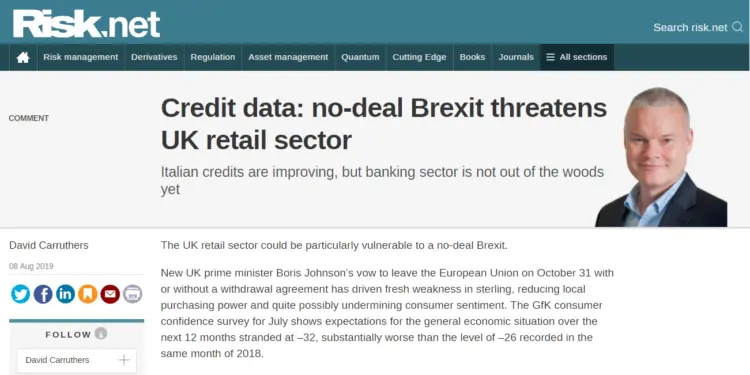The UK retail sector could be particularly vulnerable to a no-deal Brexit.
New UK prime minister Boris Johnson’s vow to leave the European Union on October 31 with or without a withdrawal agreement has driven fresh weakness in sterling, reducing local purchasing power and quite possibly undermining consumer sentiment. The GfK consumer confidence survey for July shows expectations for the general economic situation over the next 12 months stranded at –32, substantially worse than the level of –26 recorded in the same month of 2018.
In this series of monthly articles from Risk.net, David Carruthers, head of research at Credit Benchmark, reports on the deteriorating state of the UK Retail sector, particularly in UK Restaurants & Bars. Also in UK news, a Credit Consensus Indicator (CCI) for Industrials. In Europe, we compare the credit levels of Corporate and Financial entities for several European countries, highlighting Italy’s bad loan problem. US Basic Materials also show signs of a negative credit trend in the midst of ongoing trade tensions with China.
Read the full article using the below link:
View original article (external link)



